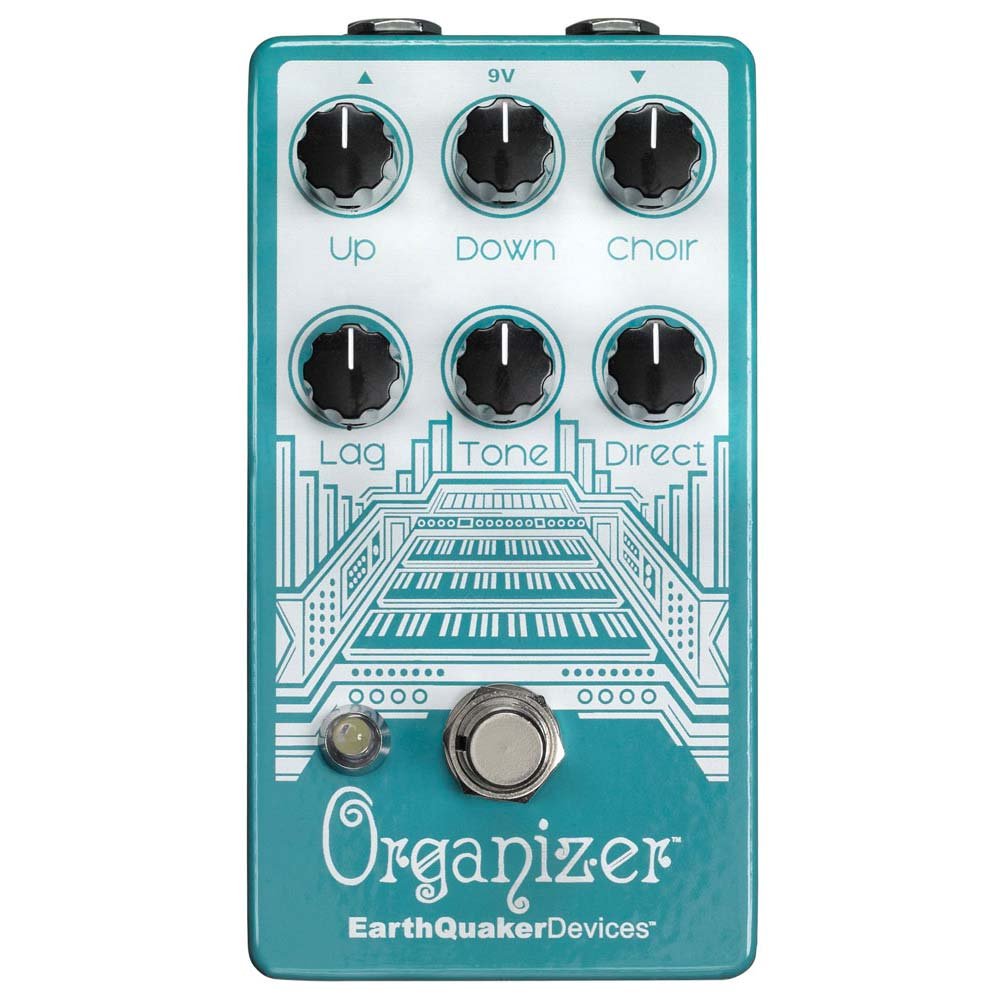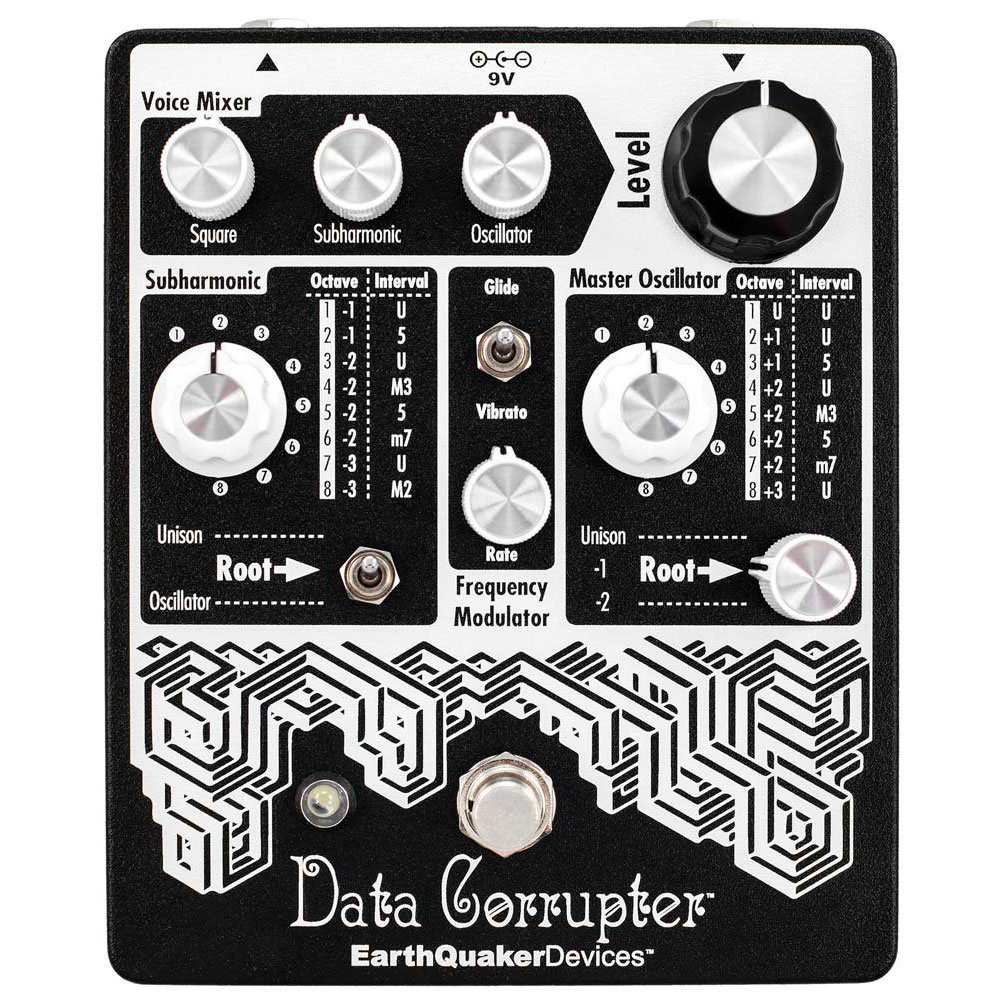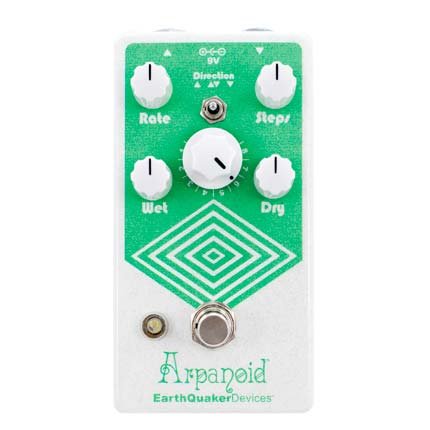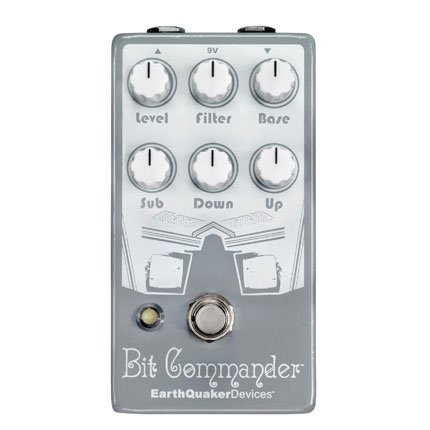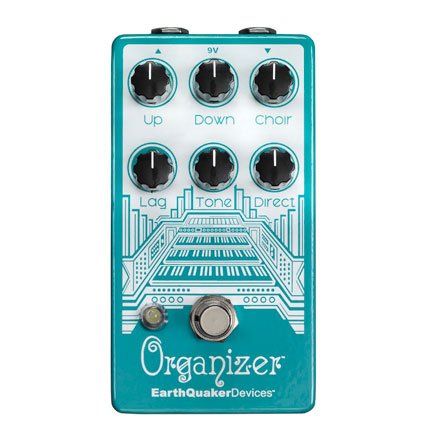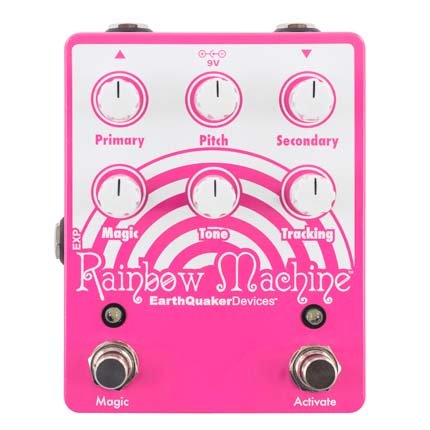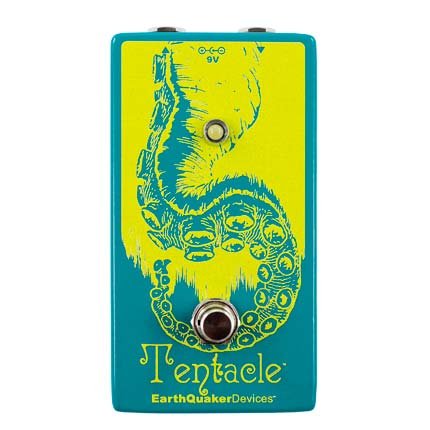Octave & Pitch
Malcolm X Abram
Welcome back, beloved EarthQuakers! We're back with another look at an entire category of EQD pedals. For this post, we're focusing on the octave and pitch pedals, where many of our most esoteric and unusual Devices reside. This category is perfect for the sonic adventurers and the knob tweakers looking to really weird out their instrument's signal and introduce different sounds into their music.
In basic terms, analog monophonic octave pedals take your signal and either double the frequency, which gives you an octave up, or halve the frequency, giving you an octave down. Octave effects are often paired with fuzz (the Hoof Reaper's is built-in), and Jimi Hendrix is one of the early and most famous octave (up) users, as heard in "Purple Haze" and several songs from his Band of Gyspys. Other examples include the opening solo from Prince's "When Doves Cry," and many, many Dinosaur Jr. songs.
Pedals that shift the signal's pitch can be used as octave pedals but are more versatile because you can add harmonies, and many are polyphonic. For example, the Digitech Whammy is a beloved pitch shifter famously used by Jack White in "Seven Nation Army" and several other White Stripes songs, as well as his solo tunes. Tom Morello is a big Whammy guy heard on "Know Your Enemy” and “Killing In the Name Of." Another example is Radiohead's "My Iron Lung."
There are six pedals in EQD’s octave and pitch category. We've got three polyphonic pitch pedals: the Arpanoid, Rainbow Machine, and the Organizer. There are also two analog monophonic synth pedals: the Data Corrupter and the Bit Commander. Finally, there is the humble and no-nonsense monophonic - and knob-free - octave-up Tentacle.
MEET THE PEDALS
Tentacle
This little one-trick pony is the most simple pedal in the EQD catalog. But it's a pretty good trick. The Tentacle is the exact same octave up used on the Hoof Reaper, and its simplicity (no knobs, no switches!) is perhaps its best feature.
Organizer
A polyphonic organ emulator that is pleasantly versatile. Yeah, it can give your guitar or bass that almost-but-not-quite-a-Leslie sound, or it can get pretty weird if that's what you're seeking. It has Octave Up and Octave Down knobs that feed the Choir knob, adding two octaves up and two down for a thicker organ sound. The Lag knob controls the delay for the wet signal, which, when mixed with the Direct knob, can produce some cool organ delay effects. Because the Organizer is polyphonic, it tracks quite well and can handle your fanciest chords and voicings, making them sound even fancier!
Arpanoid
This pedal is, frankly, a weird one, and the kind of pedal most folks would need to spend quality time experimenting with to discover its unique charms. It's a polyphonic pitch arpeggiator that takes your notes and adds an ascending or descending scale. You choose the direction, up, up-down or down, and there are eight modes to choose from, including four major and four minor modes. The Step knob determines how many notes there are in the sequence so you can select the length of the effect. The Arpanoid is a shortcut for those who enjoy sonic chaos but can also be quite traditionally musical and atmospheric at slower tempos and with some careful note and chord choices.
Rainbow Machine
One of EQD's most beloved and unique pedals. It's based on a DSP (Digital Signal Processing) polyphonic pitch warping engine, using digital oscillators to make your signal wild and wacky.
Bit Commander
This analog octave synth has six knobs, but it is actually not too complicated. It adds a light square wave to your original tone and allows you to dial in the appropriate amount of square wave synth tones. You can mix and match a sub-octave, an octave down, and an octave up. It's an old-school analog dirt synth machine for your guitar, bass, drums, synth, or any signal it's fed.
Data Corrupter
This big bad pedal is an analog harmonizing synth chaos machine. At first glance, it can be intimidating with its two eight-setting rotary knobs, a couple of switches, and three other knobs. It certainly requires that you spend some quality time fiddling around with its many controls, but it will reward you with more than just the "Robot Fart Noises." Though, who doesn't enjoy a bit of musical android flatulence from time to time? Anyway, set the Master Oscillator to your desired octave. Then, manipulate the Frequency Modulator controls, including a Glide/Vibrato switch and a Rate knob, to enter some weird but still tight-tracking harmonic territory or unleash an unpredictable cacophony as the D.C. destroys and reconstructs your original signal into something new. The Voice Mixer, which allows you to control the mix of Square wave, Subharmonic, and Oscillator, is also where you can either tame the analog beast or lean in and let it take your single notes or chords to new and strange sonic realms. At its least chaotic, the Data Corrupter can give you a hard, industrial-sounding square wave fuzz tone. Add a subharmonic you can dial in that not only offers one or two octaves down or up but also some harmonies, including the familiar fifth, a major third, a major second, and a minor seventh. Besides turning your guitar into a synthaxe or your bass into a vivisected Moog, the Data Corrupter can add some really fun and inspiringly weird stuff to drums and other percussive instruments.
METHOD OF OUR MADNESS
We keep it simple at the Upstairs Bedroom Sound Labs. This time out, the UBSL staff is using the neck pickup of a 90s Indian-made Fender Stratocaster Squire II into an AMT V1 digital preamp modeled on a Vox AC30. The signal then goes through the pedals and into the Bassman 4X10 preset on the Mooer Radar Speaker Cab Simulator and into a Focusrite Scarlett 4i4 and Presonus Studio One 5.
SOUNDS ABOUND
Tentacle
Simple little chord progression with a dash of noodling. We'll start with the dry signal, then add the Tentacle (which is monophonic but produces an interesting ring mod-like sound with chords and finally, we'll stomp on the Special Cranker for some heavy.
Now let’s try it on bass. Using the SVT IR on the Mooer Radar, we’re going to play a quick bass riff and kick in the Tentacle. We like the way it sharpens the attack and adds some grit to our old four string.
Organizer
Here we'll give you an idea of how the Choir knob works. The Organizer is polyphonic, so we'll make it work a little and strum some chords and take a trip around the Direct knob. We'll begin with the dry signal, then turn it counter-clockwise for the fully wet signal, so you can hear what's happening to the notes. Then we'll bring it back to around noon. In practice, most folks would blend it in, so don't worry that it will dominate your signal unless that’s your desire. It's got that near-shimmer sound that has become quite popular on recent digital reverbs and delays. Please head over to the product page to hear samples of the Organizer on bass, drums, and synths.
Arpanoid
As previously stated, unless you enjoy sonic chaos or are creating a riff or progression around the pedal's unique charms, the Arpanoid takes some getting used to. For this clip, we wanted to show how you can use it to add harmonic and rhythmic elements to a progression. So, we have the Mode knob set to travel from the root note(s) to one octave above. The Rate knob is at about 4 o'clock, and the Direction switch is set to Down. The Steps knob is set at 9 o'clock, and the Wet and Dry knobs are both at noon.
Rainbow Machine
Many players like to use this pedal as a slightly weird chorus, so that's where we'll start. The Primary knob (volume of the polyphonic harmony) and the Secondary knob (an added octave up or down depending on the position of the Pitch) are fully cranked, and the Pitch knob (adjusts the pitch of the harmony) is at noon for that familiar chorus sound. Then we'll turn the Pitch knob counter-clockwise, which pitches the Secondary down a fourth, back to noon. Then we'll turn it clockwise, sending the Secondary up a third, giving you a seasick simulated shimmer sound. We've got the Tracking at noon for a little delay so that you can hear the pitch-shifting wackiness.
Bit Commander
Since this pedal is monophonic, we're just going to riff out a bit and take you through the three octave knobs: Sub, Down, and Up. We've got the Level and Filter knobs at noon and the Base knob (the squared input signal that gives you that fuzz sound) at around 3 o'clock. Here's a short 8-bar riff, and we'll go clockwise through each of the three octave knobs from zero to maximum. Many folks may find the maximum settings too much on their own, and you’ll get some of that 8-bit sounding video game chirps at the more extreme settings. But once you start mixing and matching them, you can dial in some good analog synth-like sounds.
Data Corrupter
There are so many options and combinations available *on this pedal, and most folks know it can make cool noises. So we’re going to take you through the harmonic possibilities found in both the Subharmonic and the Oscillator rotaries. The Square knob is at noon so you can hear the original signal fuzzed up a bit. For the Subharmonic clip the Subharmonic knob is at noon, the Root switch is set to Unison to remove the Frequency Modulator from the signal path and we have the Oscillator volume knob at zero. The order is: one octave down (-1), a fifth (-1), two octaves down (-2), a minor third (-2), a fifth (-2), a minor seventh (-2), three octaves down (-3) and a minor second (-3).
For the Master Oscillator clip, the Subharmonic is removed and the Oscillator’s Root switch is set to an octave down (-1), the Glide/Vibrato switch is set to Glide and the Rate knob is at maximum to keep some of the chaos at bay. The order for the Oscillator is: Unison, an octave up (+1), a fifth (+1), two octaves up (+2), a minor third (+2), a fifth (+2), a minor seventh (+2) and finally, three octaves up. It's gonna get dirty, folks.
That was fun, wasn't it? We hope you are intrigued and inspired by these wonderfully weird boxes, and please check out their product pages and videos for more information and ideas.
Malcolm X Abram is a recovering reporter and music writer and a proud 40 year guitar noodler. He lives, works and plays in the bucolic dreamland of Akron, Ohio in an old house with two dogs who don’t really like each other and way too many spiders.


